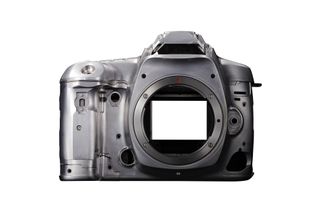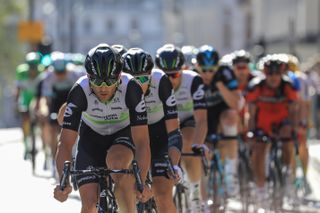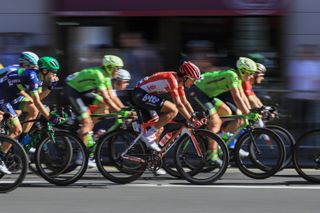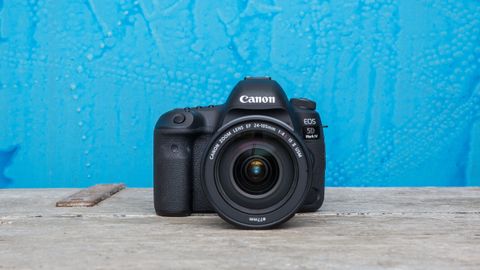Why you can trust TechRadar
Build and handling
- Magnesium alloy and polycarbonate construction
- Dust and weather-sealed
- Weighs 800g
At first glance the 5D Mark IV bares a striking resemblance to the outgoing Mark III (and for that matter the 5DS and 5DSr), and there's a simple reason for that. In a nutshell, Canon doesn't want existing 5D users to have to, as they say, 're-learn' the new camera, and so aims to keep the transition as hassle-free as possible.

That said, there have been numerous tweaks and refinements to the body. The hand grip has been enlarged for starters, providing an even more satisfying hold when you pick the camera up, while the pentaprism now stands slightly taller to accommodate the GPS unit.
Despite cramming more tech into the body, the engineers at Canon have managed to cut the weight of the 5D Mark IV by 50g compared with the Mark III, while at the same time improving the weatherproofing, with extra grommets and seals.
The reduction in weight hasn't compromised the overall feel of the camera; it certainly feels incredibly well put together, and ready for the rigours of professional use, with a combination of magnesium alloy and polycarbonate for the body, plus a glass fibre prism cover.



While it looks a little different to the sprung lever we first saw on the EOS 7D Mark II, the 5D Mark IV now features a customisable button just below the joypad on the rear of the body. This can be assigned to perform a multitude of functions in conjunction with the front command dial – a useful option would be to set it to control ISO, allowing you to toggle the sensitivity without having to take your eye away from the viewfinder.
As you'd expect for a camera that's in its fourth generation, handling is very polished (and much improved for the extra functionality in the touchscreen – more on that in a bit), so existing Canon users should feel right at home, although photographers shooting with the 5D Mark IV alongside a 1D Mark II may end up inadvertently pressing a wrong button or two because of the slightly different assignment of controls.
Autofocus
- 61-point AF, 41 cross-type AF points
- 21 cross-type AF points at f/8
- Dual Pixel CMOS AF for Live View
As you'd expect for a camera that sports a virtually identical AF configuration to the flagship 1D X Mark II (Canon is at pains, though, to state that the systems aren't completely identical, with some different internal components being used), AF performance doesn't disappoint.

The AF is linked to the 5D Mark IV's metering system, with the latter helping to detect and track not only coloured objects, but perform face recognition as well. In the scenarios we tested it under, the AF tracking performed very well, locking on and following our chosen subject.
We found that Zone AF performed well in our tests – when it's selected alongside one of the six Case Studies that tailors the AF to take into account the speed, sensitivity and how erratic your subject is moving, you have a formidable combination.
Coverage is good, and better than in the 5D Mark III, but there's still a noticeable bias towards the centre of the frame. That minor quibble aside though, the AF system performs brilliantly.

Shooting in Live View, the Dual Pixel AF is a huge improvement over the relatively sluggish system on the 5D Mark III, with focusing pretty much instantaneous, making it a much more valuable feature to have than it has been in the past. For those shooting video and wanting to work quickly with autofocus, Movie Servo AF delivers a pleasing transition as you re-focus during recording.
Current page: Build, handling and AF
Prev Page Introduction and key features Next Page Performance and image qualityPhil Hall is an experienced writer and editor having worked on some of the largest photography magazines in the UK, and now edit the photography channel of TechRadar, the UK's biggest tech website and one of the largest in the world. He has also worked on numerous commercial projects, including working with manufacturers like Nikon and Fujifilm on bespoke printed and online camera guides, as well as writing technique blogs and copy for the John Lewis Technology guide.

